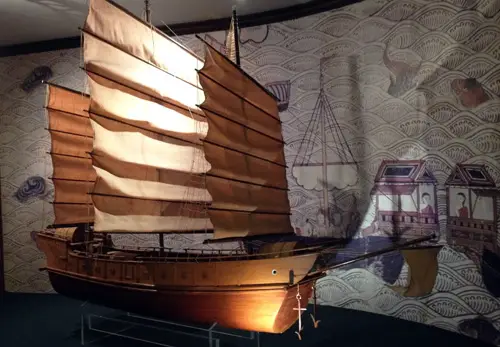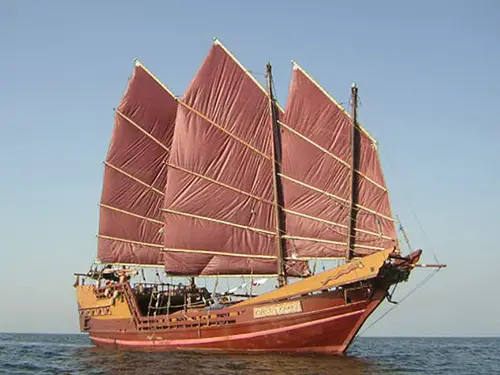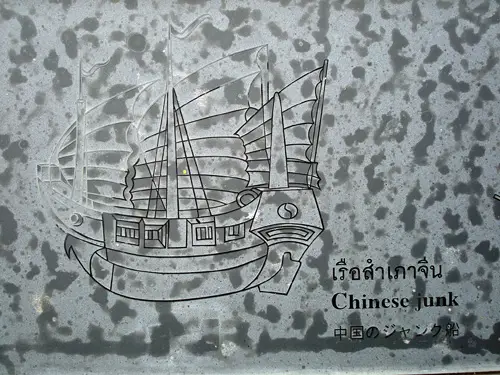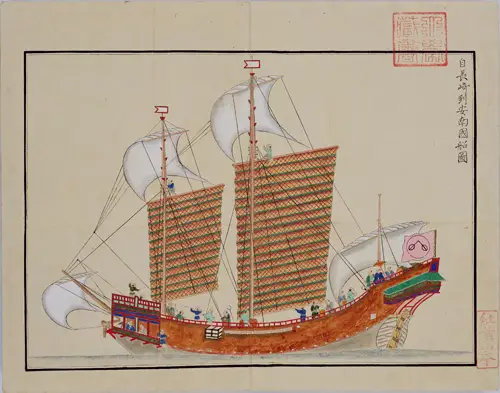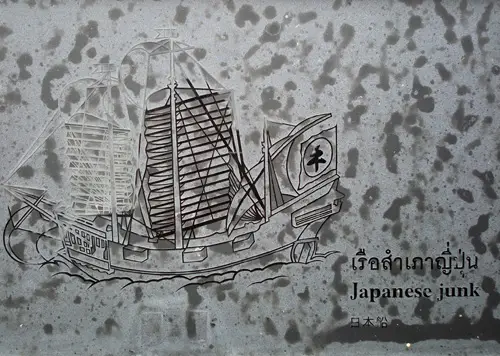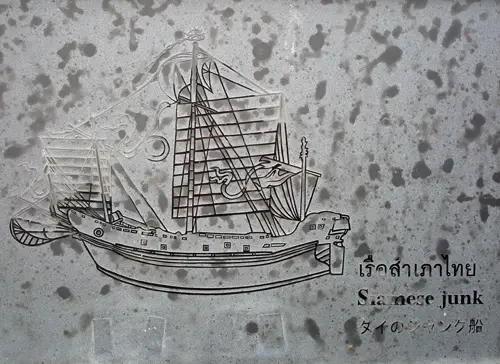The term junk is used to cover many kinds of boat, from ocean-going to cargo-carrying to pleasure boats to live-aboards. The word junk derives from the Chinese word “chuan” which literally means “boat” or “ship. ”
Junks vary greatly in size and there are significant regional variations in the type of rig. However, they all employ fully battened sails. In the 17th century, they were used throughout Asia for extensive ocean voyages.
1. Chinese Junks
Chinese junks were used extensively in Asian trade during the 16th and 17th century, especially to Southeast Asia and to Japan, where they competed with Japanese Red Seal Ships.
Chinese junks were usually three-masted and averaged between 200 and 800 tons in size. The largest junks were manned by around 130 sailors and could transport hundreds of traders and passengers.
2. Japanese Junks
Japanese junks were also knows as Red Seal Ships after the red-sealed permit which each junk needed from the Tokugawa shogunate in order to leave the port. In Japanese, the junks are called “Shuinsen.”
Although used for trade, the Japanese junks were well-armed and, between 1600 and 1635, more than 350 Japanese junks sailed to Southeast Asian countries. Japan mainly exported silver, diamonds, copper, swords and other artifacts, and imported Chinese silk as well as some Southeast Asian products. In 1635, the Tokugawa shogunate closed its borders ending the period of red-seal trade.
3. Siamese Junks
Siam used to be the name of Thailand before 1939. During the 17th century, Siamese junks were frequently used by the Ayutthaya kingdom for their trade with Japan but also with other Southeast Asian countries.
The Siamese-Japanese trade was important for the Siamese kings as it provided them with goods and wealth that enabled them to stay in power.
Watch the video below to see Chinese, Japanese and Siamese junks.
Visit our playlist for more History Videos.
